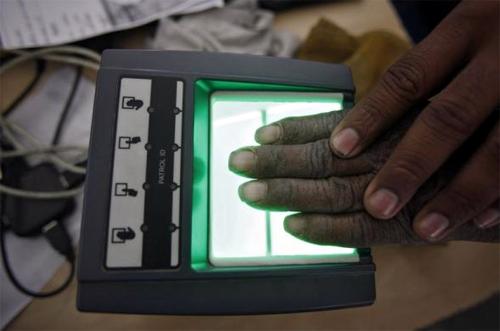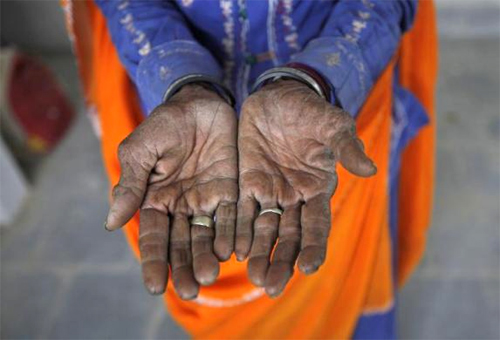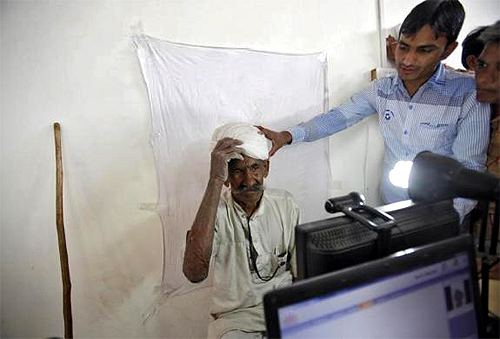 | « Back to article | Print this article |
How Indians get the Aadhaar card
Aadhaar is a 12 digit individual identification number issued by the Unique Identification Authority of India on behalf of the government of India.
This number will serve as a proof of identity and address, anywhere in India.
Any individual, irrespective of age and gender, who is a resident in India and satisfies the verification process laid down by the UIDAI can enrol for Aadhaar. Each individual needs to enroll only once which is free of cost.
You can go to any authorised Aadhaar enrollment centre anywhere in India with your identity and address proof.
UIDAI process accepts a nationally valid list of documents. Common proofs of identity and address are election photo ID card, Ration card, passport and driving license.
Photo ID cards like PAN card and Govt ID cards are permissible for identity proof. Address proof documents also include water – electricity – telephone bills from the last three months.
Click NEXT to read more...
How Indians get the Aadhaar card
In case you do not have common proofs, Certificate of Identify having photo issued by Gazetted Officer/Tehsildar on letterhead is also accepted as Proof of Identity.
Certificate of Address having photo issued by MP or MLA /Gazetted Officer/Tehsildar on letterhead or by Village Panchayat head or its equivalent authority (for rural areas) is accepted as valid Proof of Address.
Even if someone in a family does not have individual valid documents, the resident can still enrol if his/her name exists in family entitlement document. In this case the Head of Family in entitlement document needs to be enrolled first with valid PoI & PoA document.
The head of the household can then introduce other members in the family while they are enrolling. UIDAI accepts 8 document types as Proof of Relationship. Please click here for a nationally valid list of documents.
Where there are no documents available, resident may also take the help of Introducers available at the enrolment centre. The Introducers are notified by the Registrar.
At the enrollment center, one has to fill personal details in the form. Your photo, finger-prints and iris scan will also be taken as a part of the enrollment. You can review the details you have provided and make corrections during enrolment itself.
You will get an acknowledgment slip with an temporary enrolment number and other details captured during enrolment
You need to enrol only once. Enrolling again is a waste of your time as you will get only one Aadhaar number.
Based on your information provided, your details will be verified centrally. If your application is successful, an Aadhaar number will be generated and mailed to your address. The waiting time for Aadhaar may vary from 60-90 days.
Click NEXT to read more...
How Indians get the Aadhaar card
Each Aadhaar number will be unique to an individual and will remain valid for life.
Aadhaar number will help you provide access to services like banking, mobile phone connections and other government and non-government services in due course.
It will be easily verifiable in an online, cost-effective way and will eliminate the large number of duplicate and fake identities in government and private databases.
Click NEXT to read more...
How Indians get the Aadhaar card
The Unique Identification Authority of India (UIDAI), is an agency of the government of India responsible for implementing the Aadhar scheme, a unique identification project.
Click NEXT to read more...
How Indians get the Aadhaar card
Established in February 2009, the authority aims to provide a unique id number to all India. The UIDAI authority will maintain a database of residents containing biometric and other data.
Click NEXT to read more...
How Indians get the Aadhaar card
Aadhaar will over time be recognised and accepted across the country and across all service providers.
Click NEXT to read more...
How Indians get the Aadhaar card
Aadhaar number will consequently form the basic, universal identity infrastructure over which Registrars and Agencies across the country can build their identity-based applications.
Click NEXT to read more...
How Indians get the Aadhaar card
Unique Identification of India (UIDAI) will build partnerships with various registrars across the country to enrol residents for the number.
Such Registrars may include state governments, state Public Sector Units (PSUs), banks, telecom companies, etc.
Click NEXT to read more...
How Indians get the Aadhaar card
These Registrars may in turn partner with enrolling agencies to enrol residents into Aadhaar. Aadhaar will ensure increased trust between public and private agencies and residents.
Click NEXT to read more...
How Indians get the Aadhaar card
Once residents enrol for Aadhaar, service providers will no longer face the problem of performing repeated Know Your Customer (KYC) checks before providing services.
They would no longer have to deny services to residents without identification documents.
Click NEXT to read more...
How Indians get the Aadhaar card
Residents would also be spared the trouble of repeatedly proving identity through documents each time they wish to access services such as obtaining a bank account, passport, or driving license etc.
Click NEXT to read more...
How Indians get the Aadhaar card
By providing a clear proof of identity, Aadhaar aims to empower the poor and underprivileged residents in accessing services such as the formal banking system and give them the opportunity to easily avail various other services provided by the government and the private sector.
Click NEXT to read more...
How Indians get the Aadhaar card
Ghewar Ram (R), 55, and his wife Champa Devi, 54, display their Unique Identification (UID) cards outside their hut at Merta district in Rajasthan.
Click NEXT to read more...
How Indians get the Aadhaar card
An operator works on his table while enrolling villagers for the Unique Identification (UID) database system at an enrolment centre at Merta district in Rajasthan.
Click NEXT to read more...
How Indians get the Aadhaar card
A villager goes through the process of a fingerprint scanner to register for the Unique Identification (UID) database system at an enrolment centre at Merta district in Rajasthan.
Click NEXT to read more...
How Indians get the Aadhaar card
A villager prepares to be photographed for the Unique Identification (UID) database system at an enrolment centre at Merta district in Rajasthan.















